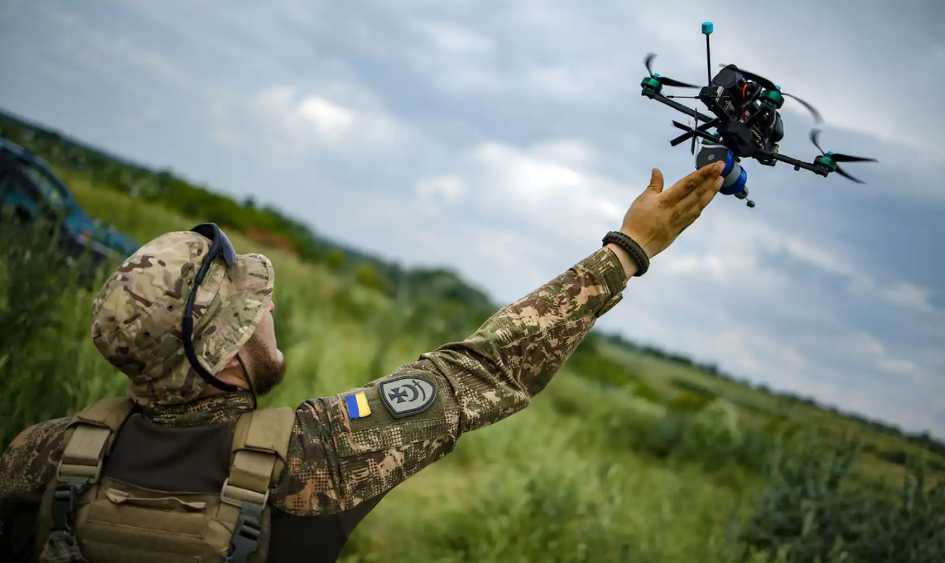Recent investigations have uncovered a concerning development involving advanced drone warfare and Mexican drug cartels.
Shocking Link Between Ukraine’s War and Mexican Cartels
Intelligence agencies in Ukraine and Mexico are jointly probing claims that cartel members joined Ukraine’s International Legion not just to fight against invading forces but to secretly learn how to operate First-Person View (FPV) attack drones. These drones, widely used in Ukraine’s battlefield, are fast, precise, and deadly—qualities now reportedly sought by organized crime groups in Mexico.
The International Legion was originally created to allow foreign volunteers to support Ukraine. However, reports from credible investigative sources suggest that some of these volunteers may have had hidden intentions. Mexican intelligence officials have raised alarms, saying that certain individuals joined the Legion specifically to gain real-world knowledge of FPV drones. This type of drone flies using a live video feed, which makes it far more difficult to operate compared to standard consumer drones.
FPV drones have been game-changers in Ukraine’s war. They are often rigged with explosives and used to hit enemy vehicles, buildings, and even soldiers. Operating these drones requires extensive training—something Ukraine has developed specialized schools for. Now, concerns are growing that this hard-earned battlefield expertise may be spreading beyond the country’s borders and into the hands of criminal groups.
Massive 50,000 Kg Chemical Bust at U.S. Border Exposes Chinese Link to Deadly Mexican Drug Cartels
Drug Cartels Eye Drone Tactics From the Frontlines
Mexican drug cartels have already been using drones for illegal operations for several years. They first began dropping small explosives from modified commercial drones. Then they moved on to building makeshift armed drones. Now, FPV drones are becoming their next weapon of choice. These are the same kinds of drones that Ukraine uses to attack enemy tanks and bunkers.
Investigators believe that cartel members fighting in Ukraine are trying to learn how to build, fly, and weaponize these FPV drones. There are even ongoing checks to confirm whether some of the Spanish-speaking volunteers have ties to criminal organizations or past activities in armed militias in Latin America.
U.S. Targets Weapons Suppliers Fueling Mexican Cartels in an Explosive Crackdown
Intelligence sources have named specific units within the International Legion where these individuals may have operated. These include semi-secret groups known for their role in intense combat zones like Donbas and Kharkiv in eastern Ukraine. As a result, authorities are now investigating Spanish-speaking volunteers in these units and are cross-checking their data with international crime databases and law enforcement files.
Moreover, cartel members are believed to have already used the knowledge they gained. In early 2024, officials recovered a relatively intact FPV drone in the town of Ixtlán del Río in Mexico’s Nayarit state. Sources monitoring cartel activity say one of Mexico’s most powerful cartels carried out a failed attack using the drone to strike a rival faction.
FPV Drones Are Changing Mexico’s Cartel Wars
The Cártel de Jalisco Nueva Generación (CJNG) and the Sinaloa Cartel are currently waging violent turf wars. Intelligence firms that monitor these groups say that the CJNG has been actively upgrading its arsenal. Their capabilities have advanced significantly with the integration of FPV drones. These drones can fly into small windows or even land directly on a moving vehicle, making them extremely dangerous in tight urban environments.
Cartels have already been using armored vehicles known as “narco tanks” or “monstruos” in battles. These modified trucks are often covered in steel plates and reinforced with cages to protect against gunfire. However, FPV drones could now pose a new kind of threat to these vehicles. Some cartels have even started adding anti-drone protection to their vehicles, a sign that they are adapting to this new warfare method.
Flying FPV drones requires a considerably greater level of ability than flying standard drones. FPV drones, in contrast to consumer models, need training that is comparable to that of actual aircraft piloting. Another level of difficulty arises when learning how to operate these drones in combat situations. That’s why the possibility of cartel members receiving hands-on training in Ukraine is raising serious concerns among intelligence agencies.
💀 Border threat evolves—cartels ditch mules for drones in Arizona’s airborne fentanyl crisis
Videos on social media show cartels testing FPV drones in Mexico, with recovered drones confirming a shift in cartel warfare. Security officials fear this knowledge could rapidly escalate drone use in drug-related violence.
Investigations are ongoing to uncover the extent of cartel ties to drone tactics learned abroad. Officials have expressed alarm at how quickly this expertise is impacting cartel operations as the technology becomes more accessible.

